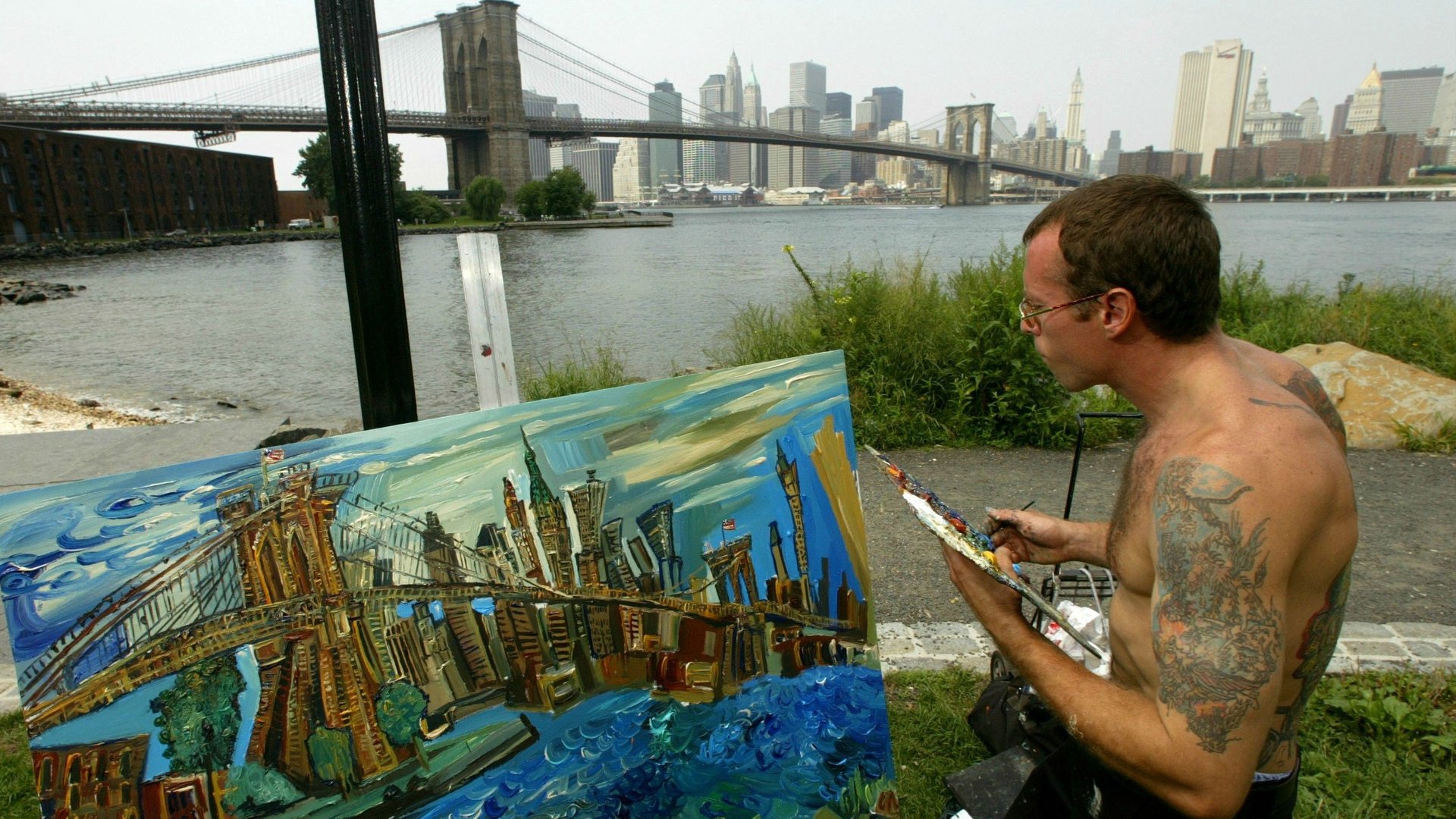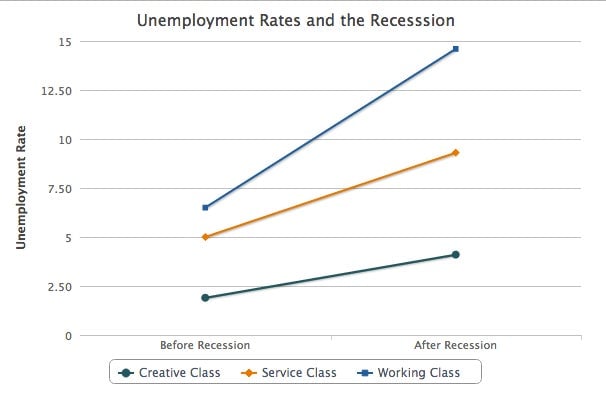Want to avoid unemployment? Join the ‘creative class’
The economic crisis of 2008 left millions of Americans out of work. Even though the job market has been slowly improving lately, employment levels remain considerably below where they were before the crisis. And the effects of the crisis have fallen unevenly on different kinds of workers and different kinds of places.


The economic crisis of 2008 left millions of Americans out of work. Even though the job market has been slowly improving lately, employment levels remain considerably below where they were before the crisis. And the effects of the crisis have fallen unevenly on different kinds of workers and different kinds of places.
I took a close look at this in a recent study, “The Creative Class and the Crisis” published recently in the Cambridge Journal of Regions, Economy and Society (an ungated working paper version is here), with my colleagues Charlotta Mellander of the Martin Prosperity Institute and Todd Gabe, an economics professor at the University of Maine. Our research examined how workers in three broad types of jobs — knowledge-based creative class jobs (in science and technology; business and the professions; and arts, design media, land entertainment) lower-skill routine service jobs (in food preparation and retail sales for example), and routine working-class jobs (in manufacturing, transportation and construction) — have fared since the apex of the economic crisis. The study covered the period 2006 through 2011, using data from the U.S. Bureau of Labor Statistics and Census Bureau’s Current Population Survey for both individuals and metro regions.
The crisis hit hardest at blue-collar workers, while creative class workers and metros with higher shares of creative class jobs fared considerably better. The unemployment rate for creative class workers, which was 1.9 percent in 2006 before the crisis, increased to just 4.1 percent in the years following the recession’s official end — an increase of 2.2 percentage points. The unemployment rate for workers in blue-collar jobs increased from from 6.5 percent before the onset of crisis to 14.6 percent at its end, more than three times higher than that for creative class workers and a jump of more than 8 percentage points. The unemployment rate for workers in routine service jobs increased from 5 percent to 9.3 percent at its end, more than double that for creative class workers a 4.3 percent jump.

The study also includes a detailed statistical analysis of the role of occupation in an individual’s likelihood of being unemployed. It used variables that measure the effects of factors like educational attainment, as well as demographic characteristics like race, age and marital status, types of industry, and size of region.
Even after controlling for all those things, the analysis found that having a creative class job dramatically reduced a person’s chance of being unemployed over the course of the crisis. All others things being equal, we found that having a creative class occupation reduced an individual’s probability of being unemployed by 2.0 percentage points between 2006 and 2011. Having a creative class job had a bigger effect on the probability of being unemployed than holding a college diploma and about the same effect as having an advanced degree.
The study also found that while unemployment rates were lower in metros with higher shares of creative class jobs, the biggest benefit for creative class workers came in regions with lower shares of creative class jobs. The impact of having a creative occupation on the likelihood of being unemployed, the study found, was slightly stronger in metropolitan areas with lower shares of creative workers.
Conversely, having a working class job dramatically increased an individual’s probability of being unemployed over the course of the crisis.
The study concludes that:
[H]aving a Creative Class occupation lowers an individual’s probability of being unemployed — in fact, the effect is larger than the marginal effect associated with having a four-year college degree (compared to someone with only a high school diploma) — and that the impact of having a creative occupation became more beneficial in the two years following the recession. These results, along with our findings related to the other major occupational groups, are indicative of a structural change taking place in the U.S. economy. This shift is characterized by high — and growing — unemployment in Working Class occupations, whereas the relative position of creative workers improved in the years following the recession.